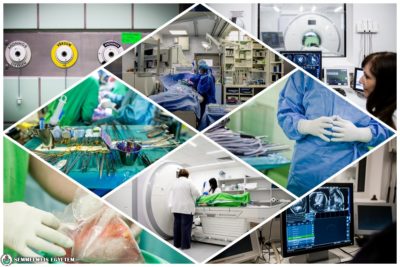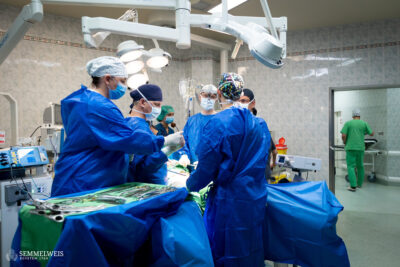Dr. Csaba Dobó Nagy, Head of the Department of Oral Diagnostics, and Gábor Orbán, Research Assistant of the department, won the 2020 Innovation Award in the clinical researcher category. In their project, they are working on a measuring device that offers a unique diagnostic opportunity for practical dentistry to calculate dentin thickness. The device allows dentists to be able to measure the thickness of the dentin layer, thus preventing the dental pulp from coming to the surface. The device may be an important instrument for any common dental procedures.
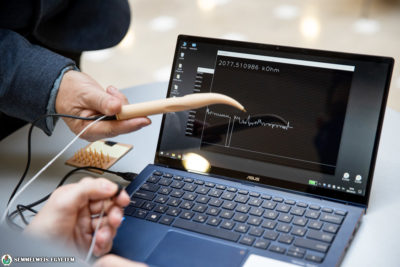 “During a dental intervention, the thickness of the remaining dentin layer after layer removal (drilling) depends greatly on the fine motor movement of the dentist’s hand and the dentist’s experience.”, explained Dr. Csaba Dobó Nagy, Head of the Department of Oral Diagnostics.
“During a dental intervention, the thickness of the remaining dentin layer after layer removal (drilling) depends greatly on the fine motor movement of the dentist’s hand and the dentist’s experience.”, explained Dr. Csaba Dobó Nagy, Head of the Department of Oral Diagnostics.
Preparation is not always done in a textbook-like way, as a slanted tooth must be prepared differently than a straight one, but the shape of the cavity always changes in the case of fillings as well. However, in case of individual preparations, the dentist has no reference points regarding proximity of the dental pulp.
“It is common practice not to make the dentin layer thinner than 0.5 mm, because drilling into the pulp has serious consequences: a simple dental filling procedure can easily turn into root canal treatment.”, said the department head, who aimed at finding a solution to this practical problem.
His joint work with Gábor Orbán began about three years ago, who at that time was doing research on microelectrodes implanted in nerve tissues at the Institute of Cognitive Neuroscience and Psychology of the Research Centre for Natural Sciences of the Hungarian Academy of Sciences under the supervision of Gergely Márton.
“Dr. Csaba Dobó Nagy, who was in contact with the Institute of Cognitive Neuroscience and Psychology through his other research projects, asked me if I could do the same small scale measuring process in human teeth as I am doing with brain electrodes. This is how I started to work at the Faculty of Dentistry.”, recalled Gábor Orbán, who joined the Department of Oral Diagnostics as a research assistant.
According to the department head it was a great advantage in the joint work that Gábor already had a great deal of experience in the electrophysiology equipment of neurosciences. The implementation of the idea, envisioned twenty years ago, was also aided by the university’s value-driven approach towards innovation and a supportive environment.
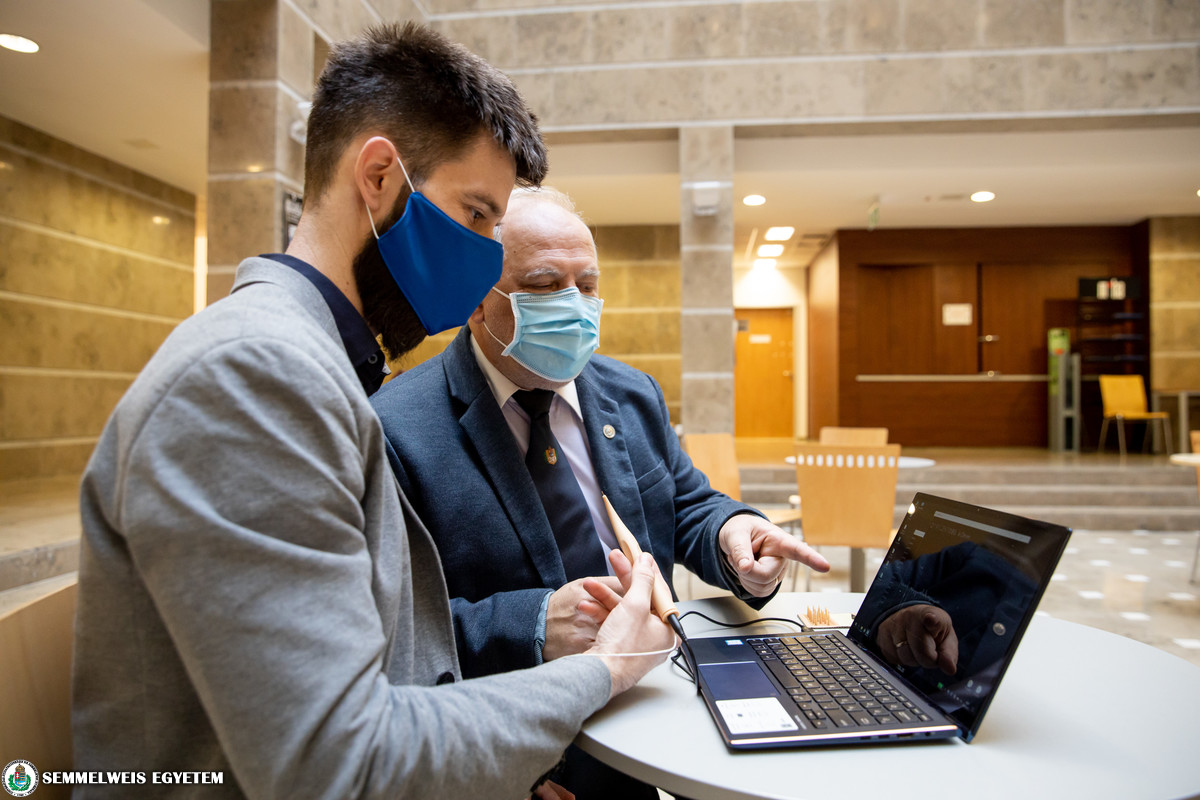 As an electrical engineer, Gábor Orbán also carried out the engineering development in the project.
As an electrical engineer, Gábor Orbán also carried out the engineering development in the project.
“The dentin itself contains tens of thousands of micro-sized channels per square millimeter containing ionic fluid. Therefore, dentin can be considered as an electrically conductive material, and its electrical impedance can be measured”, explained Gábor Orbán.
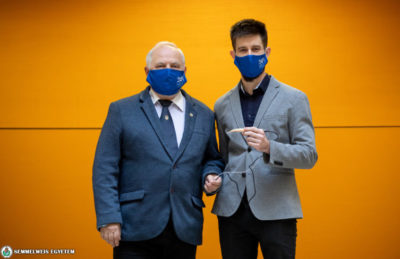 In their research, they examined the proportion of impedance and dentin thickness on dentin discs prepared from human wisdom teeth, which enables the measurement of the distance between the dental pulp and the surface. Their measurements revealed a correlation between dentin thickness and impedance that could be used by a hand-held instrument to calculate thickness. Their results have also been published in scientific journals.
In their research, they examined the proportion of impedance and dentin thickness on dentin discs prepared from human wisdom teeth, which enables the measurement of the distance between the dental pulp and the surface. Their measurements revealed a correlation between dentin thickness and impedance that could be used by a hand-held instrument to calculate thickness. Their results have also been published in scientific journals.
The measuring device allows dentists to be able to measure the thickness of the dentin layer, thus preventing the dental pulp from coming to the surface. After the first successful wisdom tooth preparation experiments, the development of the technology followed. The development of their own electronic design as well as that of the data processing and displaying software have already been completed. They are currently working on the development of a prototype. They pointed out that the device may be an important tool in every dental practice.
In addition to being a research assistant, Gábor Orbán is also a PhD student at Óbuda University. Half of his doctoral thesis are related to his research in the field of dentistry, and the other half to his research in neuroscience conducted at the Research Centre for Natural Sciences.
Bernadett Bódi
Photo: Attila Kovács – Semmelweis University
Translation: Katalin Illés-Romhányi
